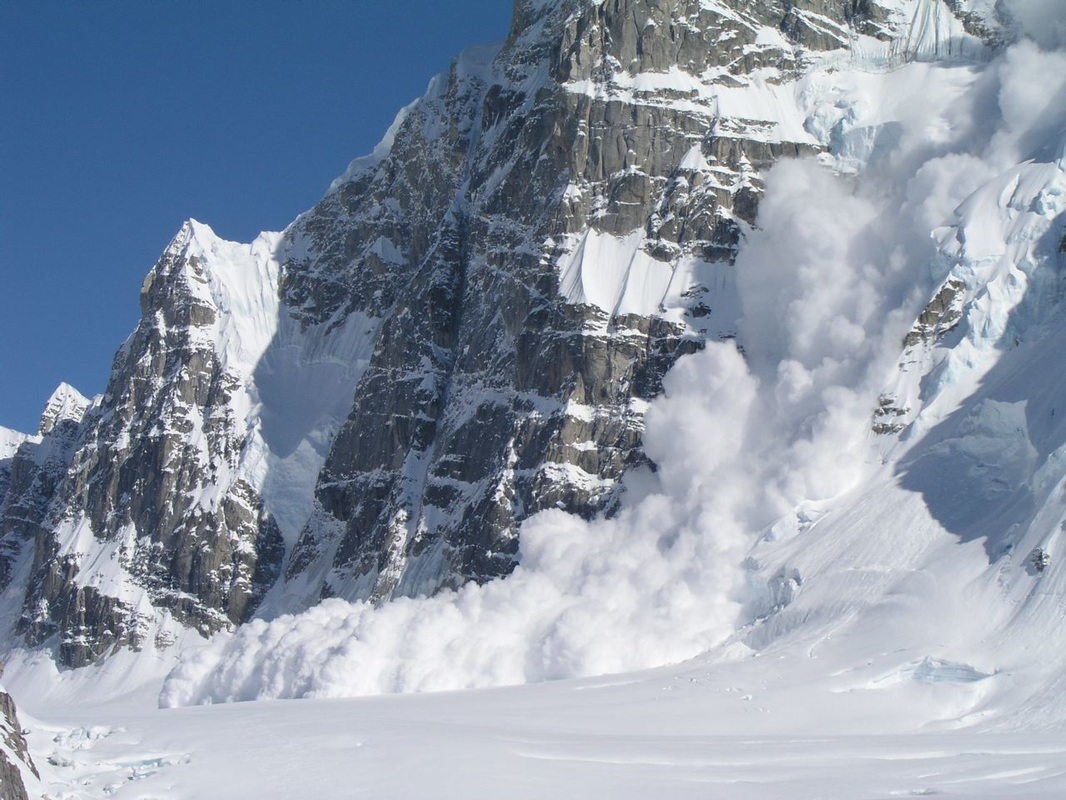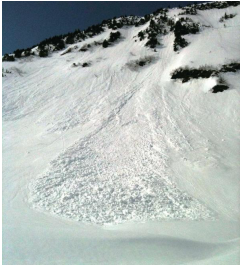|
There are many different kinds of avalanches. All cause a threat to backcountry traveler. Although asphyxiation is the number one cause of death in avalanche fatalities, trauma causes a significant number of deaths too.
Different avalanches require different amounts of force to be released. Similarly individual avalanches contain more or less energy. |
SlabSlab avalanches occur when a slab is formed, from a recent storm or wind event, on top of a weaker layer. Once the weak layer can no longer support the weight of the slab, the weak layer collapses causing the slab to slide down a decline.
|
dryDry loose avalanches, or sluffs, are a result of dry unconsolidated snow on the surface of a snowpack. These avalanches usually start at a point and gain mass as they move down the slope. They are usually found on steeper slopes.
|
wetWet loose avalanches are similar to dry loose avalanches. When an aspect gets a lot of sun throughout the day the surface snow begins to warm up and become slushy. A single point trigger can cause these avalanches to run a great distance because they are heavier.
|
Create a free web site with Weebly



